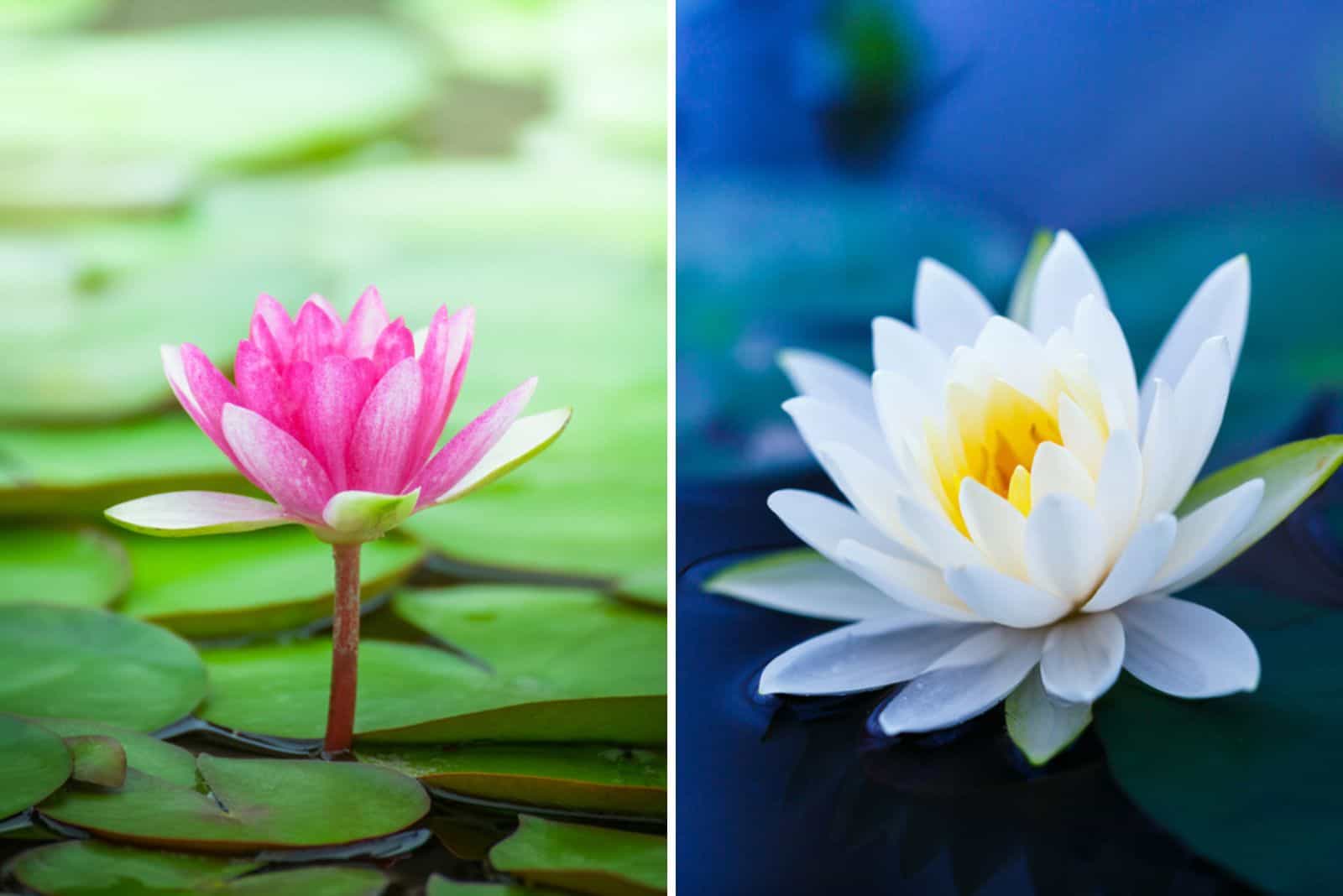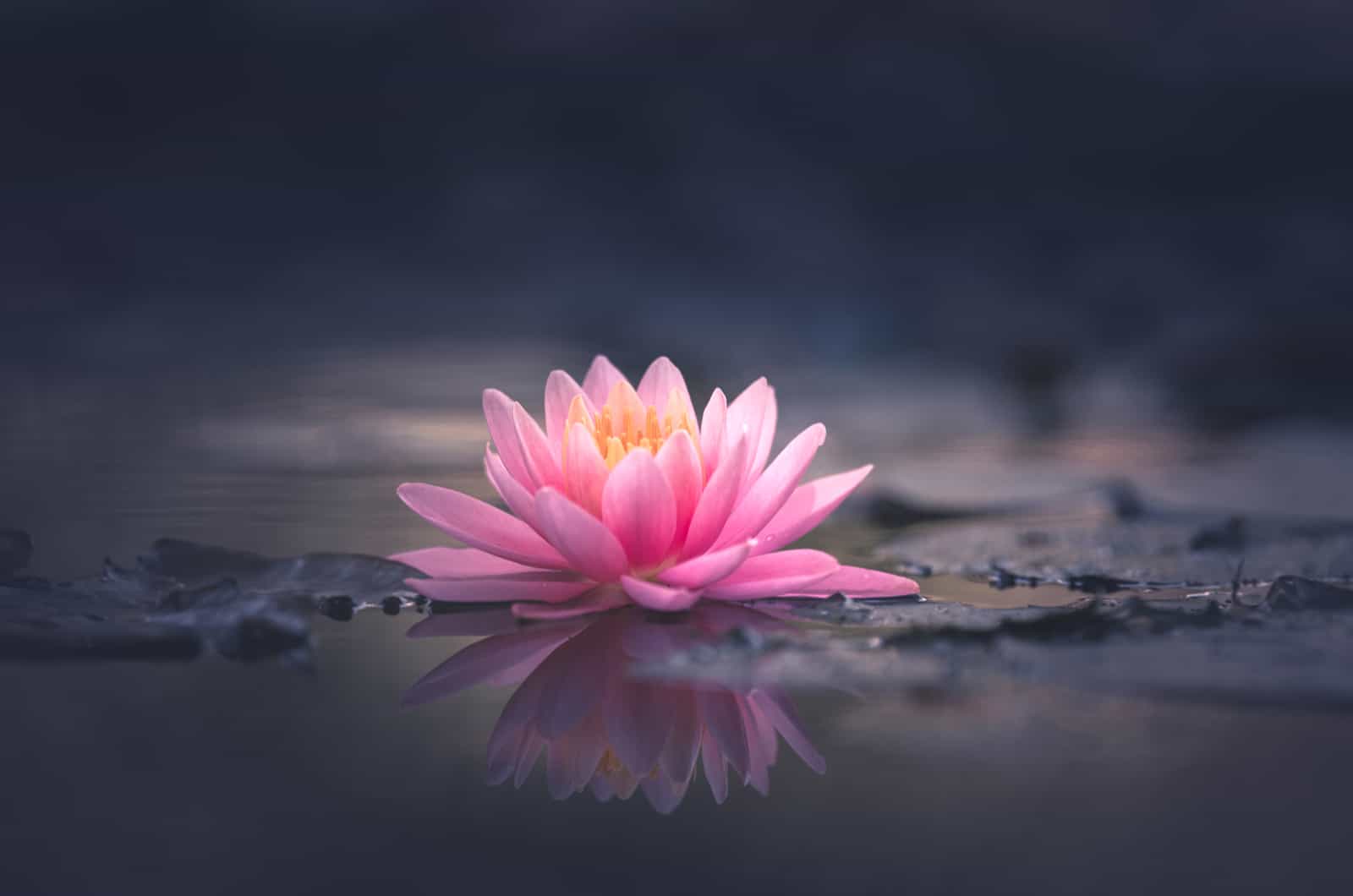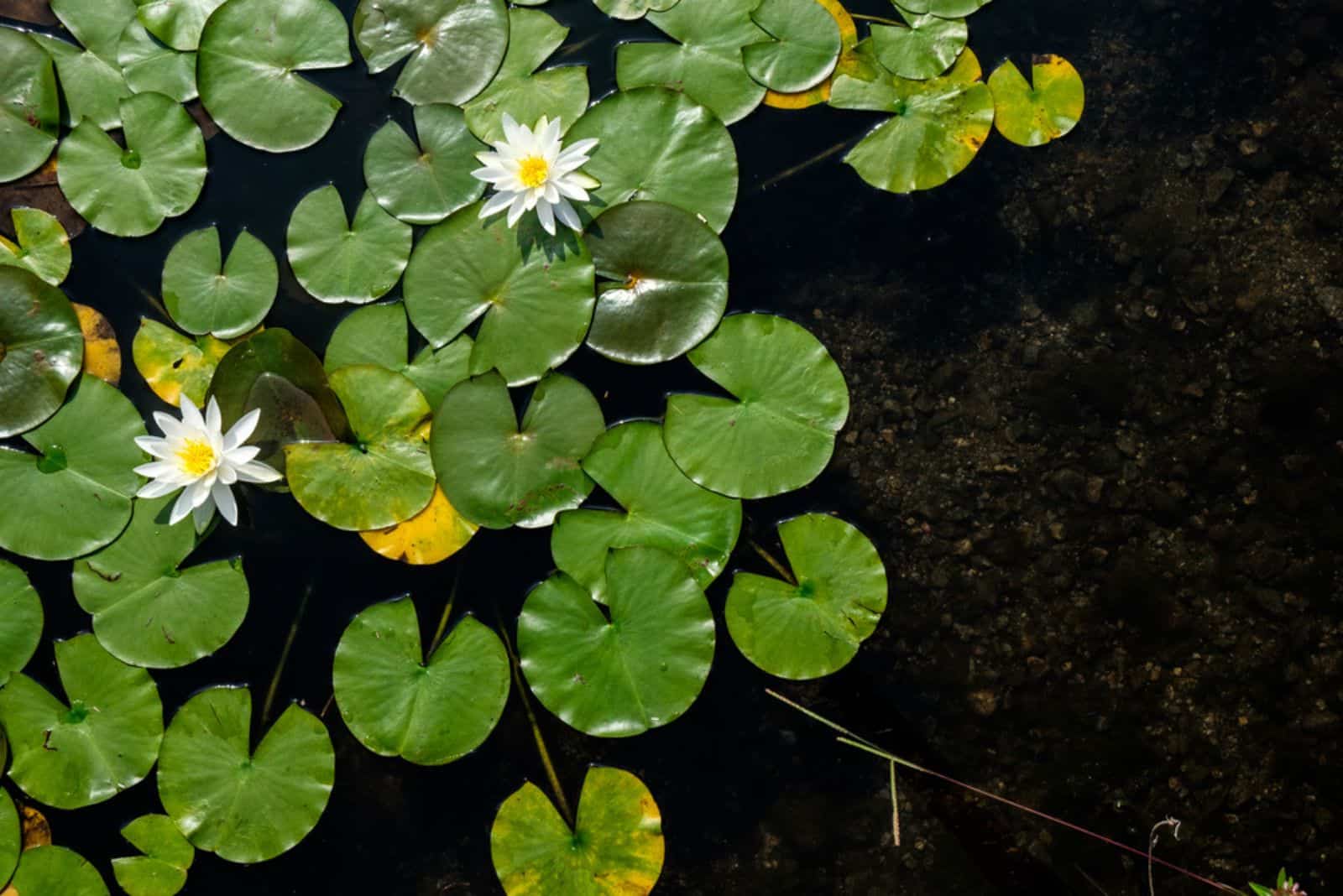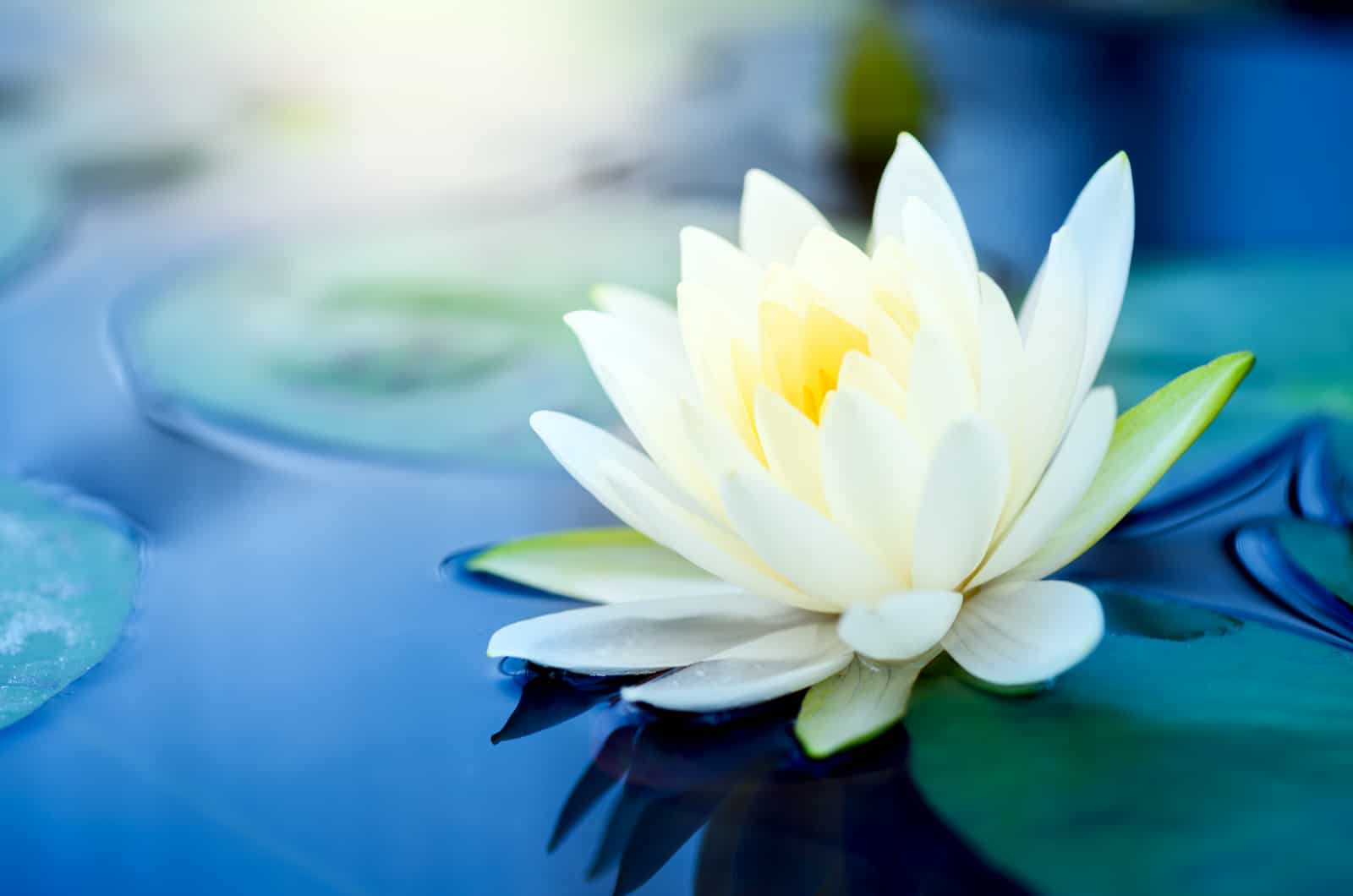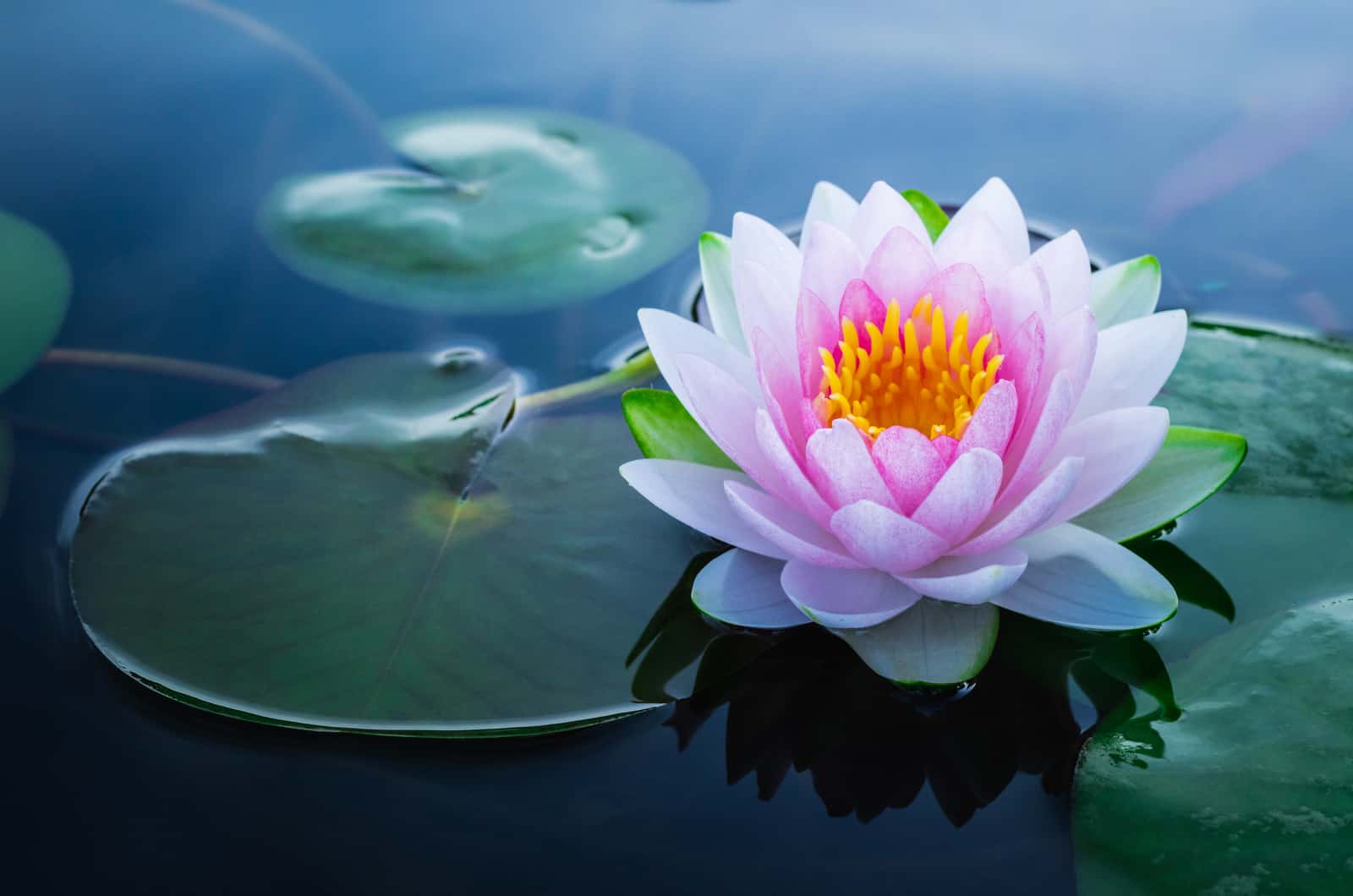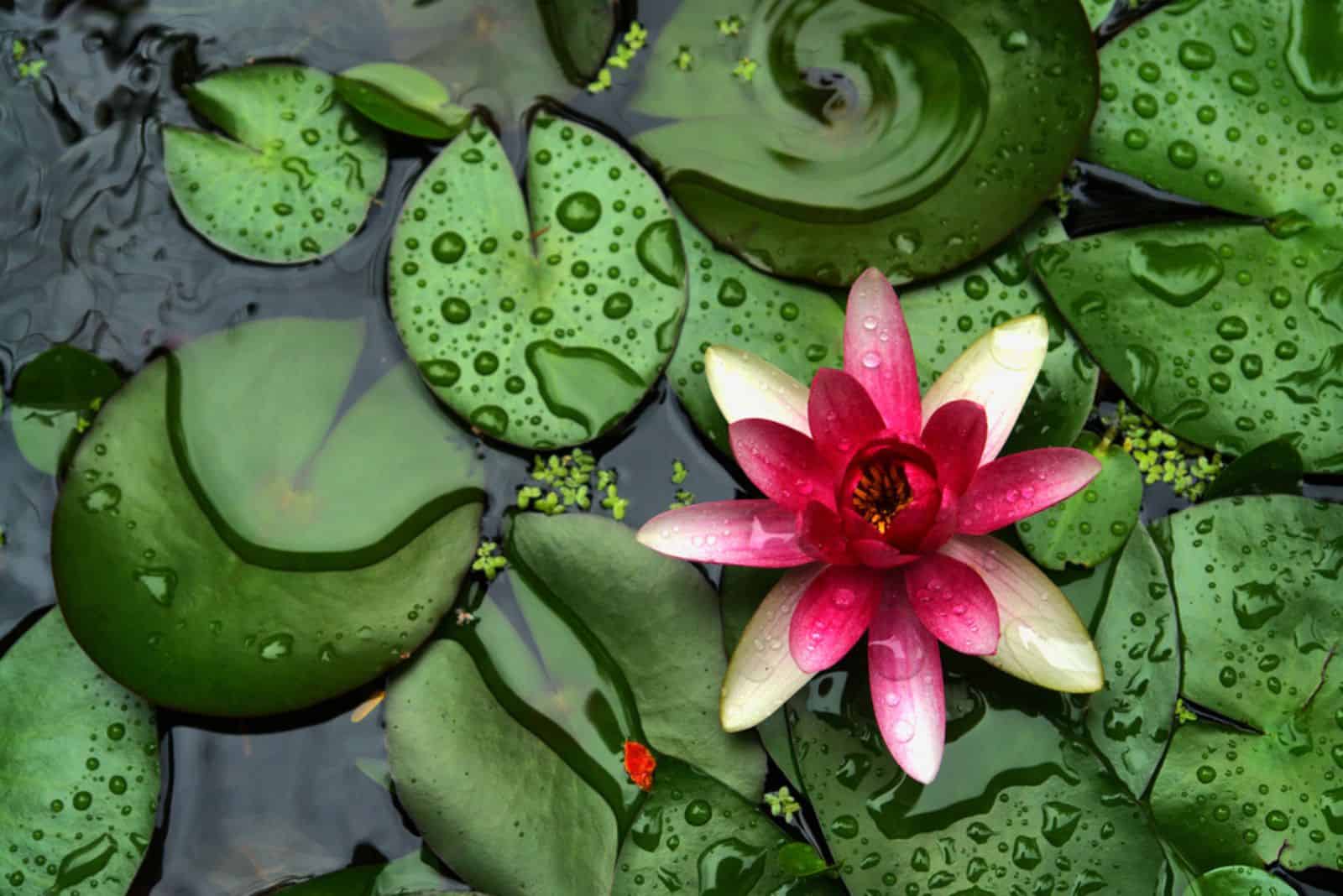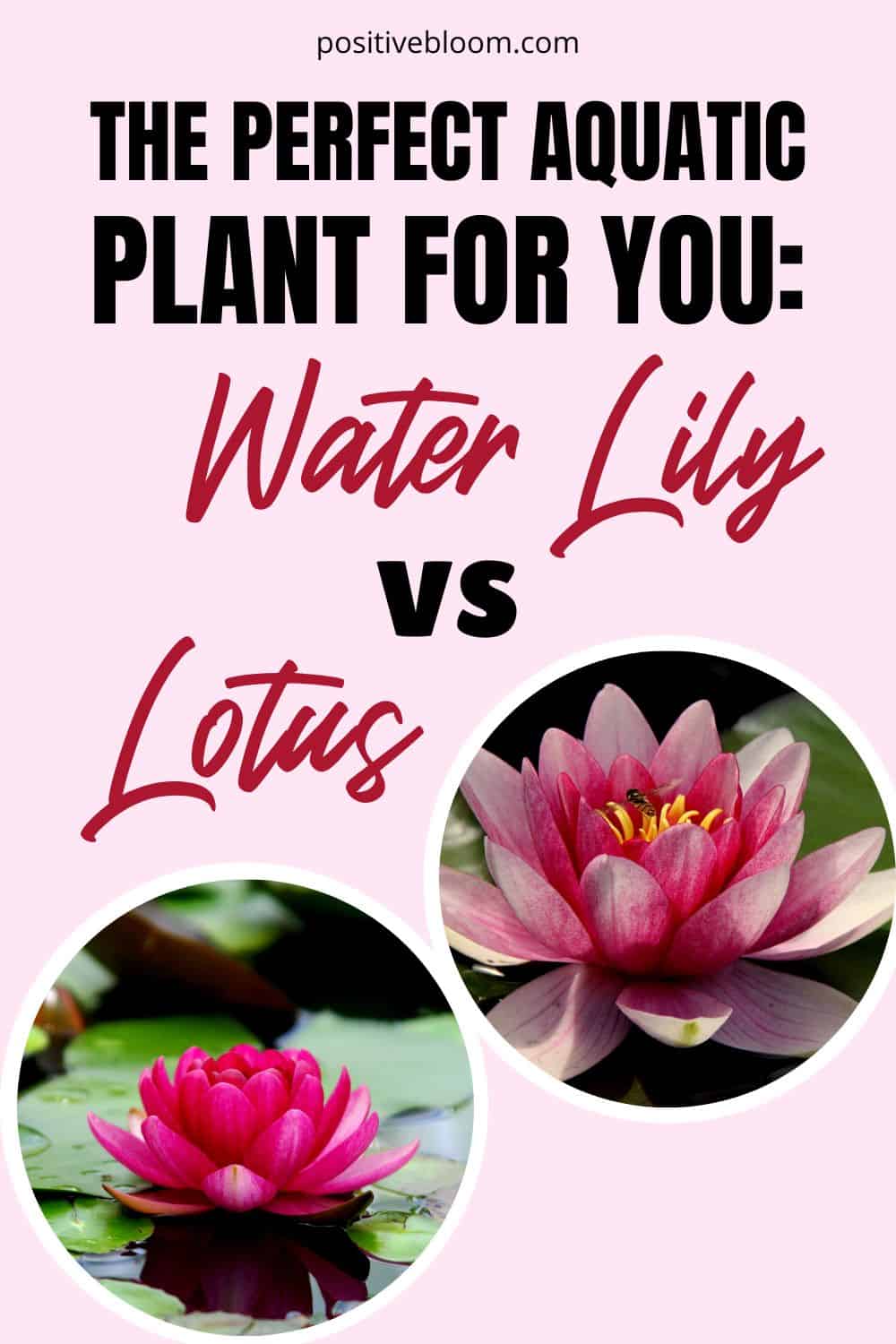Even though they might look the same to the untrained eye, water lily and lotus plants are very different. Their names are different, as well as their appearance, hardiness, and more.
However, these plants also have certain similarities, such as their blooming time, preference for freshwater, full sun, etc.
We’ll discuss all these factors, and who knows, perhaps you’ll be persuaded to get them both to decorate your water garden!
Before we set off to examine these plants in more detail, let’s look at the table below to learn their basic differences and similarities:
[table id=485 /]
Water Lily vs Lotus
Both the lotus and water lily are on the list of plants suitable for ponds, but as there are some crucial differences between them, it might be best to grow them in separate mediums.
They don’t have the same fertilization requirements, and what’s suitable for one plant might not be enough for the other.
There are many other things that distinguish these plants, and we’ll examine them all in the following sections.
Taxonomy
One of the first things we notice about these plants is that they don’t have the same name and they don’t belong to the same family.
Lotuses are members of the Nelumbonaceae family, and water lilies of the family Nymphaeaceae.
Both plants branch into two categories. We can distinguish between hardy and tropical water lilies and tropical and perennial lotuses.
But another crucial difference between these plants is in the number of genera that belong to one family.
The family of water lilies is composed of six different genera. In contrast, the lotus family contains only one genus, Nelumbo, and two species: Nelumbo nucifera (commonly referred to as sacred lotus, Indian lotus, or Laxmi lotus) and Nelumbo lutea (American lotus).
Origin
Even though these flowering plants look similar, their place of origin is different. Water lilies originate from tropical and temperate climates of all continents.
The origin of the lotus is slightly more difficult to remember. Nelumbo nucifera is native to Asia (eastern, southern, and southeastern regions, including Northern India) and possibly Australia, whereas Nelumbo lutea originates from North America and the Caribbean.
Growth Habit
One of the main differences between these two plants is in their growth habit. The lotus is known as an emergent aquatic plant because its leaves and flowers rise above the water level.
But the water lily floats (although, there’s an exception). The flowers of the tropical species of water lilies rise about 6-8 inches above the surface of the water.
But that’s nothing in comparison to lotuses, which can soar up to 4-6 feet!
Flowers
Even though we can find lotus and water lily flowers on the list of astonishing Chinese flowers, it doesn’t mean they’re the same.
Generally speaking, lotus blossoms are larger and can be about a foot in diameter, while the blooms of water lilies are somewhat shorter (10 inches across).
Furthermore, the lotus has a barrel-shaped carpel (female reproductive organ) lodged in an extended receptacle, while the water lily carpel is connate.
And if you closely examine a cross-section of lotus blossoms, you’ll notice an androecial ring (a circle of stamens surrounding the pistil), something a water lily bloom doesn’t possess.
Also, the stamens of these plants are different. The lotus has a filamentous stamen (stalk-like), while the water lily has a laminar stamen (leaf-like).
Water lilies have thicker, smaller, and narrower petals that are slightly pointed at the end, whereas lotus petals are wider, larger, and blunt at the tip.
Lotus flowers have fewer petals than the water lily and are usually white or pink, but can be blue, yellow, or purple. At the same time, lily flowers can come in all shades of white, yellow, red, purple, pastel orange, and pink. And they can even change color as they mature!
Blooming Time
Neither of these plants bloom in the first year after planting, but that’s about the only similarity between their flowering time. All lotus plants are day-blooming, and their flowers typically close in the afternoon.
On the other hand, different types of water lilies can be either day or night bloomers. Hardy water lilies open their blossoms during the day and the tropical varieties at night (from 6 PM to 10 AM).
Furthermore, the flowers of the lotus plants first open in early summer and continue to do so into the fall.
On the other hand, water lilies begin their blooming period in May, which lasts until September. And if your region doesn’t get frost, they can blossom all year long.
Another interesting fact is that water lilies and lotus flowers last only a couple of days!
Foliage
The first thing we notice when we examine the foliage of these two plants is that lotus leaves make a full circle, whereas water lily leaves have a cut.
Furthermore, lotus plants have completely green leaves, whereas water lily leaves can be spotted and streaked with dark purple variegations.
Finally, the lotus leaves contain trichomes (microscopic plant hairs), while the epidermis of water lily leaves has a waxy cuticle.
Seeds
After the lotus is pollinated and finishes blooming, the flower turns into a seed pod and ripens above the surface of the water. Once the seeds are formed, they fall out of the pod and are carried by the stream or animals.
But the formation of water lily seeds is different. After pollination, the seed pod forms and is dropped underwater. Seeds ripen and then float to the surface, where you can collect them.
The seeds of lotus plants can germinate anywhere between 2-8 weeks, while water lily seeds typically take about 3-4 weeks to sprout.
Size And Growth Rate
The lotus is a lot taller than the water lily, and some varieties can even grow 6-7 feet above the surface if planted in deeper water.
Water lilies, on the other hand, are much shorter than lotuses, and only some varieties can rise above water (6-8 inches).
Even though they differ in size, they both have dwarf varieties, so you can grow them in containers if you don’t have any more room in your pond.
Finally, water lilies typically grow faster than lotuses, but both plants are fast growers!
Hardiness
The hardiness zone is mainly determined by the type of plant. For instance, both lotus species are hardy down to zone 4, but that’s not the case with water lilies.
Hardy water lilies thrive in USDA zones 4-11, but the tropical varieties can only grow in zones 9-11.
Fertilization
The general rule is that lotus plants require more fertilizer than water lilies. Of course, you can use the same hydroponic plant food, but the frequencies differ.
Once your lotus develops aerial leaves, you can start feeding it every 3-4 weeks during its growing season. If the leaves become yellow and chlorotic, you might need to fertilize it again (unless you’ve just fed it, in which case it might be a sign that you’ve given your plant too much food).
The water lily requires less frequent fertilization, and you can feed them once a month or every 6 weeks with Lilytabs or some similar plant food during their growing season.
Whenever you feed water lilies or lotuses, ensure that you press the tablets into the soil or growing medium and don’t just drop them into shallow waters. The fertilizer can change the pH of the water and harm both floral and faunal life.
Water Lily vs Lotus: Similarities
When you examine the water lily up close, you’ll notice how perfect it is for zen gardens on a budget because of its symbolism.
And the meaning of the lotus is not far behind!
That got us thinking: what other things do these plants have in common?
And we found a whole bunch of them: preference for freshwater, tuberous roots, light requirements, and even propagation.
So, let’s find out more about these things!
Both Produce Seeds
Even though the seeds and the manner of their creation differ, that doesn’t change the fact that both water lilies and lotuses produce them.
Another thing they’ve got in common is their usage. Water lily and lotus seeds are very popular in Asian traditional medicine and cuisine, so don’t forget to collect them!
(Or you can use them to propagate more of these aquatic plants!)
Tuberous Roots
Both plants also produce tuberous roots that you can use to propagate more plants or even eat if you know how to prepare them.
You can steam, fry, or boil them.
Grow In Freshwater
Water lilies prefer muddy waters, so growing it in a shallow pond or a stream is perfect. And the same goes for lotuses.
They both prefer shallow streams, but it all depends on the variety. If you have a tall lotus or a water lily, you’ll plant them in a pond, while dwarf varieties are much more suited for container gardening.
Light Requirements
Let’s talk about the light requirements!
Both plants exhibit the most beautiful flowers in the full sun, but some water lily varieties will bloom in partial shade.
However, the blossoms won’t be nearly as attractive as ones grown in full sun conditions, so it’s safe to say that both plants require at least six hours of sunlight per day to truly shine.
Propagation
Finally, you can propagate the Egyptian Blue Lotus (which is actually a water lily), Nymphaea ‘Blue Aster’, Nymphaea ‘Tropic Sunset’, or ‘Mrs. Perry D. Slocum’ lotus, and you won’t make a mistake with any of them. The best time to propagate these plants is before they blossom, and here’s how to do it:
Step 1. Take the plant out of the container and wash it thoroughly to expose the rhizomes.
Step 2. Take a sharp, sterilized knife and cut as many sections from the root as possible. Ensure that each part has at least 2-3 eyes because the new rhizomes will develop from them.
Step 3. Place the tubers in the middle of the planter and lightly cover them with the growing medium. Clay-loam substrates are the best, but you can also mix sand and topsoil with clay.
Step 4. Pour water slowly until the substrate is soaked and muddy. Remember that the water should be clear and only the soil muddy.
Step 5. Move the pot into a warm area and wait until the leaves develop. Once there’s foliage, you can move the plant to a well-lit location.
Step 6. Keep adding more liquid as the plants progress, so the leaves always float on the surface.
Pro tip: Did you know that you can grow a lotus without soil? Well, you just need something to hold the roots in place! Both lotuses and water lilies thrive in special mediums for aquatic plants, and you won’t need to fertilize them too frequently.
Symbolism
There are mentions of lotuses in many sacred Egyptian and Buddhist texts. It represents the “Divine” and is also adopted as the national flower of India.
Its meaning varies in different traditions and cultures, but everyone agrees that this flower symbolizes rebirth, purity, and strength. It got this meaning because it soars from the muddy waters, immaculate and pure, at the break of day.
The lotus can also symbolize transcendence, a transformation of the human spirit over the mundane, just like the lotus rises from the underworld.
The water lily is another plant important in Hindu and Buddhist traditions that signifies rebirth and resurrection. Water lilies symbolize enlightenment because they rise unsullied from the muddy waters and are also considered a symbol of divine birth and purity.
This plant is prevalent in Chinese tradition and weddings, where it represents a contented union lasting for a hundred years.
FAQ
We talked about the main differences and similarities between water lilies and lotuses, but there are some other things we haven’t had the chance to mention.
We’ll answer your most frequent questions in the following paragraphs!
How long do lotus plants and water lilies live?
Both of these plants are perennials, and there have even been cases where they live 15-20 years.
But even if your variety doesn’t survive that long, you’ll still enjoy it for years before old age catches up with it!
Are water lily and lotus flowers fragrant?
Yes, both plants produce fragrant blossoms described as pleasant and fruity.
Final Thoughts
The “Water lily vs Lotus” duel had some interesting twists and turns, but we finally reached the end of it. Hopefully, you can choose which one to introduce to your pond or plant in your water garden!
They have many differences, such as the appearance of their flowers and leaves, their names and origin, hardiness, and growth rate.
However, their symbolism, light requirements, and propagation are the same, and if you want your water garden to be a place of purity, enlightenment, and rebirth, you can plant either.
Let us know what you choose, and until next time!
Like this post? Share or pin it for later!

